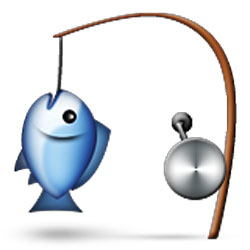 Overfishing has been a drastically increasing issue around the world for over a decade. With the advancements in boat and industrial technology and the higher demand for seafood, the fish populations of the world have been more than cut in half, according to an article on Huffington Post. Due to the amount of fish caught in order to satisfy the consumer markets, we are putting them in danger of endangerment or extinction. Finding different sustainable practices in food production are of highest importance, especially when considering the wild populations of many fish species.
Overfishing has been a drastically increasing issue around the world for over a decade. With the advancements in boat and industrial technology and the higher demand for seafood, the fish populations of the world have been more than cut in half, according to an article on Huffington Post. Due to the amount of fish caught in order to satisfy the consumer markets, we are putting them in danger of endangerment or extinction. Finding different sustainable practices in food production are of highest importance, especially when considering the wild populations of many fish species.
Sustainability means finding a way to meet present needs, while maintaining a symbiotic relationship between humans and nature, without compromising the needs of future generations. Sustainability of the oceans and the fish populations has been largely impacted by the food, retail, and tourist industries of the world’s major nations, but recent developments in aquaculture and aquaponics, as well as new ocean sustainability legislation and policy are giving fish populations the chance to reestablish themselves.
Industrialization and advancement of technology, transportation, and consumer markets globalized the food-fish industry. Boats became bigger in order to be able to catch and store more fish than in past years. Combined with the ability to travel farther distances in less time, as well as advancements in the methods to keep fish fresh in storage, fish have become an available commodity in all corners of the earth.
As the population of humans on Earth has exploded over the years, along with the desire for fish. In recent years, the consumer’s continuously shifting palette gave rise to the popularity of sushi in North America, tremendously increasing the demand for fresh fish from across the globe. With more mouths to feed and easier access to the foods throughout the world from all kinds of cultures, certain food commodities and authentic cultural cuisines have lost their originality and cultural identity as different aspects of each individual culture have become adopted in different parts of the world.
One of the sustainable practices we’ve created over time was to begin creating aquaculture farms to breed and harvest fish and other ocean organisms, like coral reefs, and plants in large quantities where variables can be controlled to produce the best products for the market.
It is no different than having farms for cows and pigs and chickens to be fed and raised how we want only to eventually be killed for human consumption. In my opinion, no animal should be raised for slaughter and used for food or any other product, but the first step towards eliminating food farms is to first eliminate the dependency on wild species.
Finding a sustainable method for meeting the consumer demands is one of the most important tools to helping keep the environment, as well as the wildlife, happy and healthy. Aquaculture is a good start to finding an ecological and less harmful process for providing fish to all the world’s markets by breeding and growing fish instead of harvesting wild communities.
Two promising alternatives to our current practices were the implementation of marine protected areas and consumer seafood-awareness campaigns. Through the implementation of marine protected areas, conservation groups have pushed for a complete ban on fishing in the spawning and breeding grounds of the oceans as well as a change in fishing tactics by lessening the use of destructive bottom-trawl nets, which drag on the ocean floor and wreck habitats.
The consumer seafood awareness campaigns, such as the one run by the Monterey Bay Aquarium, aim to educate consumers on harmful fishing tactics and help them pick menu items that are more likely to be products of sustainable practices as well as show them which restaurants offer “sustainable seafood.” Steps like these have the chance to further minimize human impacts on wild fish populations.
As a conscious consumer, making smarter and well-informed decisions about your purchase of seafood can go a long way. The more people buy fish from farm-raised and local growers, the need for wild-caught fish will go down and allow the populations to recover. The same idea can be applied to industrialized animal agriculture where animals are being slaughtered for our consumption.
An effective way to counter that and head in a better direction environmentally, economically, and humanely, is to support local farm-raised animals that aren’t taken from the wild, grown in dark, tight, and dirty enclosures. If humans were to stop eating meat amazing things would happen to the world we live in. Less food would be wasted meaning we could feed the hungry, environmental concerns would diminish significantly, and we would be conserving our natural resources.
For now, we can make smaller steps like being aware of our food industry, where food comes from and the process of it getting to the consumer, advocating and spreading knowledge for better, healthier, and more sustainable ways of producing our food, and practicing those methods with what you buy.


